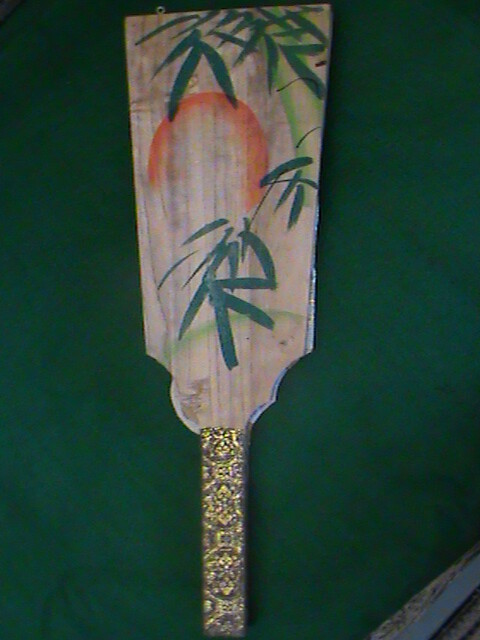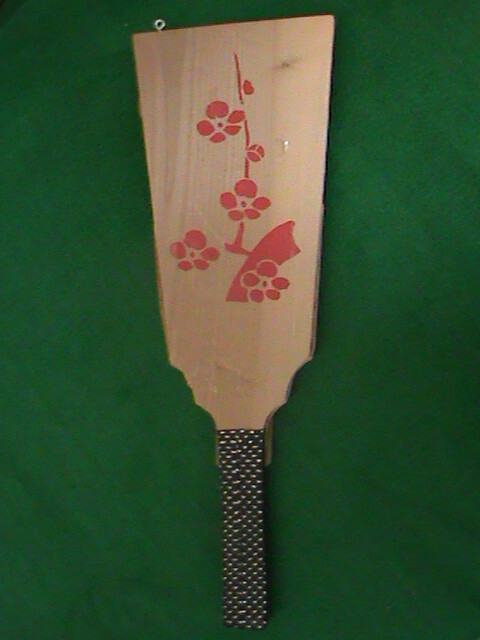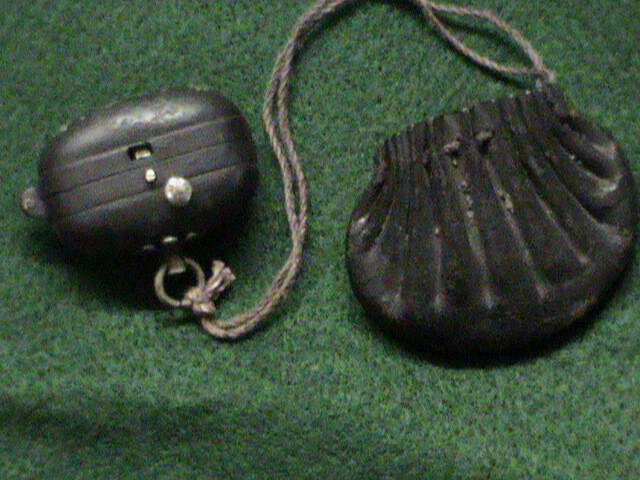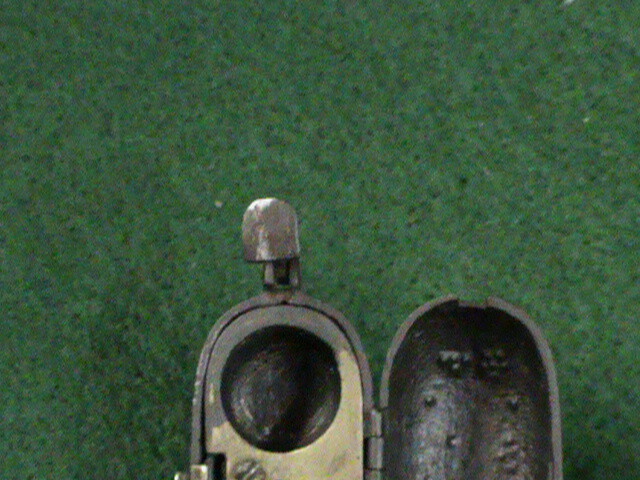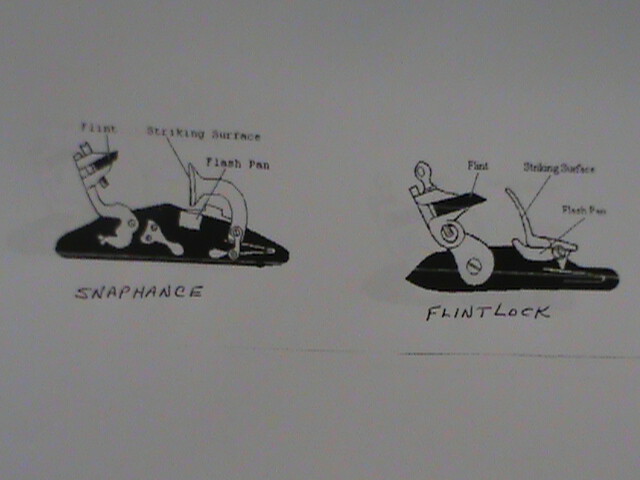-
Posts
1,397 -
Joined
-
Last visited
-
Days Won
4
Content Type
Profiles
Forums
Events
Store
Downloads
Gallery
Everything posted by watsonmil
-
Dear Members, A short article on an Art Form that has not been addressed on the NMB previously, ... but one that has significant meaning to the Japanese. On Dec. 17 - 19th at the end of each year, the Hagoita ( battledore ) fair is held at Sensoji Temple in Asakusa. Each year thousands of people come to shop for them. Hagoita are used as an effigy to rid people of misfortune and disease. In Japan, old Hagoitas are taken to shrines and burned. This is called Otakiage. The Hagoita is a rectangular wooden paddle used to play the game called Hanetsuki. It is similar to a badminton game but without the net. Although the game is rarely played anymore, ... it was usually a game played by girls on New Years Day. The shuttlecock was batted back and forth using the back of the paddle. Each time a participant missed and allowed the shuttlecock to strike the ground, a stripe of black ink was drawn on the participants face, and the game continued until one participant's face was completely covered in black ink. The Hagoita were traditionally decorated on one side with three dimensional representations of Kabuki Actors, Sumo Wrestlers, and often Geisha. The backside of the paddles are usually decorated with a very simple painting of foliage, birds, or scenery. The shuttlecock is a small ball that is the seed of the Mukuroji tree ( Mukuroji means children's health ) with feathers attached to the seed. This is why many people buy or give the Hagoita and shuttlecock as gifts and thus pray for the health of their children. It is interesting that the market began around 350 years ago. The current market attracts around 300,000 people a year and only Hagoita are sold from approximately 50 stalls. The examples I picture are from my collection of Japanese Art, and were purchased approximately 30 years ago at an antiques and collectibles fair. By the appearance of the boxes I should think they are of 1950 - 60's vintage. They are both beautifully rendered in three dimension using various textiles,sequins, wood and paper. The taller of the two measures 18 1/2 inches, while the smaller measures 15 1/2 inches. I would highly recommend watching for these as they are very attractive hanging on the wall in any room. Any errors in this short article are mine alone. ... Ron Watson
-
Dear Jan, The Bubulous shaped poppy muzzle leads me to believe this to be a product of the Sakai school of gunmakers. Although there are elements of the Kunitomo, ... I think I would stay with the Sakai school in this case. I agree with Piers that it may be of early to mid Edo in date as later Sakai guns are quite often overly decorated whereas your gun is quite plain. Sadly the patina has been removed from the barrel. If it were mine I'd repatinate it ( or have it professionally re-browned ) using a plum brown barrel browning solution. The bright steel does nothing for the gun's appearance. ... Ron Watson
-

FLINTLOCK TINDER LIGHTER NETSUKE ( SNAPHANCE )
watsonmil replied to watsonmil's topic in Tanegashima / Teppo / Hinawajū
Dear Sir, Please sign your posts with at least a first name as per the NMB rules, .... I have sent you a PM ( private message ). ... Ron Watson -

This Week's Edo Period Corner
watsonmil replied to Bugyotsuji's topic in General Nihonto Related Discussion
Dear Piers, Sadahide (1807-73) was a prolific but minor printmaker, who had trained under Utagawa Kunisada (1786-1864). He produced theatrical prints, contemporary scenes, and pictures of foreigners, such as this one. He was one of eleven Japanese print artists who showed their works at the Paris Exposition of 1866, for which he received the Légion d'Honneur. Sadahide's works incorporated the Western technique of shading. He worked primarily in the early 1860's and is well known for his depiction of foreigners. ( the above information courteousy of the British Museum web site ) ... Ron Watson -
Dear Brian, Well dig out the mounted yanone and lets have a look. You are quite correct in stating some tangs contain tiny filemarks. The polished example I pictured has filemarks much like the nakago on a sword. The file marks on my Yanone are katte-agari. I have not seen filemarks on ALL yanone tangs however ( possibly due to rust ), ... but I too have noticed the slightly bevelled edges on ALL genuine yanone tangs. Whenever I see sharp angled corners on the yanone tangs on yanone being offered, I have ALWAYS wrote them off as being copies or forgeries. We probably should not help the forgers with that bit of indescripency, ... but now it's out . ... Ron Watson
-
Dear Brian, What a wonderful collection, ... the variety and styles of yanone seem almost endless. They are truly fascinating. The scarcity of really fine examples somewhat surprises me. I see so few on offer, and the truly magnificent pieces such as found in the Grayson collection are forever lost to the collector world. It would be nice to see other NMB members share some photos and write-ups concerning yanone that they might own. I am sure some of our members have even MOUNTED specimens that they could picture showing the differences between the mountings of say target shafts to battle style shafts. I currently have some of mine mounted on ex-target shafts simply because they display better. Piers, ... I know for a fact that you have a few, ... how about some photos and provenance. A word of caution however like all things Samurai, ... the Chinese have been busy applying their copying skills. Brian ... a top notch suggestion for a more extensive thread and many thanks for the visual candy ! ... Ron Watson
-
Dear Piers, Indeed they are beautiful in polish, ... but just try and find a polisher . I have a very nice pierced example also signed, ... but no one is interested in polishing it. Most being overall tempered, ... a polish would only serve to put a clean shiny non scratched finish on the majority anyway. Most that I have in my collection, ... I would call utilitarian, ... meant for combat and once fired never to be seen again, ... so the workmanship did not warrant the same care as a sword. ... Ron Watson
-
Dear Curran, You can see three photos of my yanone on page 1 of this thread. I am sorry you chose to sell your example off. What in the world made you superstitious about owning a fine yanone. The only superstitions from Japanese artifacts I suffer from are when I handle my Nobuyoshi Katana. Having been made in the 1490 - 1510 era, and having been surrendered during WWII, .... a 500 year life span would almost certainly guarantee it having removed a few heads along the way ! The small amount of superstition the blade causes are far outweighed by it's beauty however. ... Ron Watson
-
Dear Piers, I purchased my example ( similar to Curran's but not the same point ) back in 1990 at the Chicago Sword Show I believe. It was in perfect sashikomi polish at the time and still is today. Tempered like a sword in suguha, the hada itame. OA length 8 5/8 inches, blade 2 1/2 inches. ... Ron Watson
-
Dear Ford, My heartiest congratulations. After having seen ( but not owned ) any of your work, ... I was very pleased to see your work recognized for what it truly is ... PERFECTION in metalwork. It is my hope that this recognition translates into commissions from collectors worldwide. After all the years of study and persistance it would be a shame to give up on what you truly love creating ! ... Ron Watson
-
Dear Piers, The Kanji were translated for me : Kiyotsugu saku. Supposedly of the Nio Choshu school province of Nagato .... Circ. 1688 - 1736 ... Ron Watson
-
Dear David, A nice group of yanone, ... thank you for posting the photographs. I have only one that is in POLISH. Photographs attached. ... Ron Watson
-

This Week's Edo Period Corner
watsonmil replied to Bugyotsuji's topic in General Nihonto Related Discussion
Dear Piers, I am sorry that I did not see the Ojime before posting my dribble about Tibet ( although I believe the Tibetans also made small ojime like beads ), .... so to be honest I'm not 100 % sure my Tibet theory is dribble. It's getting too late here to think logically, so excuse my contradictions. If it is Japanese in origin, .... it is most unusual. Did the Ainu produce for trade any Netsuke, Ojime, Sagemono ? I do not believe I have seen any photos of them using such accessories themselves. Very unusual items. I would agree that the handle could well be for a parasol, .... but where does the Ojime fit into that cinerio .... which brings me back to the Tibetan theory . ... Ron Watson -

This Week's Edo Period Corner
watsonmil replied to Bugyotsuji's topic in General Nihonto Related Discussion
Dear Piers, There is something reminisent of TIBET art in the antler handle. Just a gut feeling I have, ... it reminds me of something I've seen before, ... I just cannot place it for sure. If it is Japanese at all, ... my guess would be the Ainu. ... Ron Watson -
Dear David, We are still awaiting your photographs. In the mean time here are three of the several in my collection. Does anyone know the name of the bottom type ?? It is a rarely seen ( for me at least ) type that appears to have been designed for armour piercing. By the way David, ... relatively few were polished to such an extent to show a hamon. Perhaps most were tempered overall, as once fired they were unlikely to be seen again. You also asked whether it was OK to mount your heads on existing shafts of existing yanone ( target arrows I presume ). I see nothing wrong with doing this so long as you make a note of what you've done so that no one confuses the fact that the shafts once belonged to target arrows. I know I have done this and they make a much nicer display item mounted. ... Ron Watson
-

The most beautiful things.....
watsonmil replied to Anthony de Vos's topic in General Nihonto Related Discussion
Dear Anthony, Unless a major old time collection comes up for sale, ... NO ! There are some fairly good Chinese reproductions out there in the market, .... but to find that quality today on the market and GENUINE is virtually impossible. ... Ron Watson PS. Yes indeed they are VERY beautiful . -

FLINTLOCK TINDER LIGHTER NETSUKE ( SNAPHANCE )
watsonmil replied to watsonmil's topic in Tanegashima / Teppo / Hinawajū
Dear Piers, Brian, Ian, Eric, et al, Thank you all for the interest and encouragement, .... it is your appreciation that makes it worthwhile. Piers, ... brought up the subject of fakes, ... and certainly the stainless steel example he mentions would have to be fake. I would'nt have thought that someone intending to fake an example would have chosen stainless steel to work with. In fact given the complexity of the internal mechanism I would be surprised if anyone would try to fake one of these at all. I was going to take off the brass cover and photograph the mechanism on the Tinder Lighter for the membership, ... but given the miniaturization of the working parts and the compexity of just the sear system ( YES, .. I've had the bloody thing apart as it would not stay cocked ), and I cannot stand something that doesn't work, ... I decided that I would never get decent photographs given the camera I was using. I would caution the membership that messing with something this miniature and complex actually requires the services of a watch maker, and that if you own one and it does not function correctly, .... just leave well enough alone. I very nearly pulled my hair out trying to figure out what the problem was, and once finding it, ... repairing it, ... not to mention putting the bloody thing back together again. My eyes are still pulling after the eye strain and I am NOT kidding. It very nearly beat me, and I have repaired/restored firearms most of my life. It is a great credit to the Japanese craftsmen who produced such objects using only basic handtools. The quality of work these Japanese craftsmen were capable of is truly amazing. I to their capabilities. ...Ron Watson -
Dear NMB Members, I beg your indulgence for a short article on a Japanese artifact that has eluded me in one way or another for the past 25 years. The artifact I would like to describe and comment on is a so called Flintlock Tinder Lighter Netsuke. As you all must realize by now, I have a serious interest in the Tanegashima ( matchlock guns of Japan ) and their accruements. The Tanegashima was a matchlock firearm and thus required a smouldering match ( wick ) to ignite the priming powder. This presented the gunner with the problem of how to get the match lit when needed. The time frame being pre-invention of the Bic Lighter or for that matter a match, ... the only way of starting a fire was with flint and steel ( strike-a-light ). Some ingenious Japanese craftsman took the idea of the mechanical Flintlock and miniaturized it into a walnut sized and shaped Netsuke. This mechanical device was much faster and more reliable than the regular hand striking flint against steel to ignite tinder. Someone is going to come along now and say, ... but that would have been an ingenious way of lighting the tinder to make a flame to light a pipe of tobacco, and they would be absolutely correct, ... but every serious book I've read on the subject of Tanegashima and their accruements almost always has shown the Netsuke Flintlock Tinder Lighter as part of the gunners equipment as well. Now lets deal with the physical characteristics of the Netsuke Lighter, .... this particular example is made of iron with a small push button to release the top revealing the flintlock mechanism, the internal spring and sear enclosed under a brass covering and a brass tinder box. To operate the tinder lighter, one would cock the hammer containing the flint, place a small amount of tinder in the tinder pot, ... lower the striking steel over the tinder, and then depress the small brass button on the side to release the sear allowing the hammer to fall causing the flint to strike the striking steel and hopefully causing sparks to land on the tinder as the striking steel is pushed out of the way. NOTE ... I did not say Frizzen .... I said striking steel. This is rather important as the correct name for the Flintlock Tinder Lighter should be Snaphance Tinder Lighter. Every single so called Flintlock Tinder Lighter Netsuke that I have examined is actually a Snaphance lock and NOT a true Flintlock. The Snaphance was actually an early version of the flintlock which was invented around 1570 somewhere in Europe. It uses the same parts as a regular flintlock , though instead of a frizzen ( which also covered the flash pan on a true flintlock ), .... it used a part that was merely a shaped piece with a steel face, which the hammer with flint struck, which made sparks that ignited the tinder. The Snaphance's main fault was that it produced too few sparks to act as a reliable form of ignition, ... and for this reason the true flintlock with a frizzen replaced the snaphance universally in Europe in rather short order. You will note the Japanese Tinder Lighter uses the shaped piece of steel rather than a frizzen. By the way the first true flintlock as we know it today was invented in 1610 by a Frenchman to be more precise one Marin le Bourgeoys for King Louis XIII. By 1630 it was well known throughout Europe. H. B. C. Pollard writes in his Classic ... HISTORY of FIREARMS .. " There is the possibility that the flintlock principal was brought back from Japan by Portuguese navigators, the Japanese having long used flint and steel mechanical lighters . " Noel Perrin refers to this statement by Mr. Pollard in his book ... GIVING UP the GUN. It being well known that Noel Perrin's book is written with gross bias against firearms in general and is full of inaccuracies. I have no problem with his including the above quotation of Mr. Pollard along with his own added : : To light their pipes , yes. But not to fire their guns. ( He is speaking here of adapting the flintlock to act as an ignition system for firearms replacing the matchlock ) Why bother, if you don't want to use guns at all ? " ... end of quote. Here Mr. Perrin is speaking of a time when Japan had more firearms than any European nation, .... what bloody rubbish. In addition ALL Netsuke Tinder Lighters require SCREWS , the technology of cutting thread did not exist in Japan pre 1543, ... and the cutting of fine thread probably not much before the mid 1600's. Therefore the idea that the flintlock was a Japanese invention is in all probability hogwash. Given that the Portuguese arrived in Japan in 1543 and carried Matchlocks rather than Snaphances or Flintlocks ( not yet invented ) I find it very unlikely that the Portuguese carried back to Portugal the idea of the Snaphance. To the best of my knowledge NO so called Flintlock Tinder Lighter Netsuke even existed in Japan at this time. If someone knows of an example pre-dating 1543 I would be most pleased to see a photograph. It is far more likely that somewhere between 1570 and 1600 ( but predating the invention of our French friends inventing of a true Flintlock as remember all these Tinder Lighters are of the Snaphance configuration ) some Portuguese trading vessel bought over to Japan a Snaphance Firearm which the Japanese ( as is their usual custom ) adopted .... and MINIATURIZED ( which is another of the well known Japanese traits ) the Snaphance into a mechanical lighter. The reason for not building Tanegashima with either the Snaphance nor the Flintlock ignition system is quite simply ... the age of war was coming to an end, and therefore being basically a country in isolation with no danger of imment invasion ... why bother. The matchlock sufficed as a weapon without the compexities of so many moving parts plus the advantage of not requiring screws ( a technology ) the Japanese were slow to grasp. It is interesting to note that ALL Netsuke Snaphance Tinder Lighters have screws, ... and therefore must date no earlier than the first quarter of the 17th century. These Netsuke Snaphance Tinder Lighters are generally housed in iron, and alternatively sometimes housed in a brass shell. Because so many of the iron variety have virtually identical flower decorations on the top of the shell it is safe to assume that these examples all came from the same workshop. The brass examples tend to be very plain and utilitarian with little or no design on the top. The only decorative feature which sometimes appears is an overall pierced shell, or the same design of flowers as their iron counterparts. The brass examples are considered to be of a later manufacture than the iron examples. I have seen a couple of very elaborately decorated iron examples inlaid with gold and silver and these almost certainly belonged to the Daimyo class. One thing that is certain surviving examples of the Snaphance Tinder Lighter Netsuke are scarce. In over 30 years of collecting I have only seen in hand or pictured perhaps 30 examples if that many, and consequently they are relatively expensive. Photograhs to follow. I hope this short treatise on these unusual artifacts has been of interest, and that you have slightly broadened your knowledge of the Samurai Age. .... any errors are mine alone. ... Ron Watson
-
Dear Curran, Oh, ... mine eyes. That is a menuki subject matter I have NEVER seen before. :lol: I wonder if they were meant for a lady Samurai, or perhaps a gay Samurai Thanks for sharing. ... Ron Watson
-

This Week's Edo Period Corner
watsonmil replied to Bugyotsuji's topic in General Nihonto Related Discussion
Dear Piers, When I read your post, ... I did not scroll down far enough to see the photographs. A very nice display. Do you have any more photos to share. If so, I and others would enjoy seeing them. A very impressive castle by the way ! ... Ron Watson -

This Week's Edo Period Corner
watsonmil replied to Bugyotsuji's topic in General Nihonto Related Discussion
Dear Piers, Firstly congratulations on the aquisition of the Sukenobu sword. A comparison of the signature on the gun and sword should ease your mind. You have the benefit of living in Japan, and therefore should have ample resources to draw on to confirm or dispute the signatures as being right or wrong ( that is if you can find two sword experts to agree on ANY signature ). It is interesting going back over 40 years of old documents that I have signed just how much my own signature has changed. I always find it humurous to hear GIMIE everytime someone notes a slight difference in the length or angle of stroke in a character. In fact I note differences in my own signature from day to day let alone year to year and I don't use a chisel to sign ! Anyways the idea of exhibiting your collection ( or part thereof ) is a wonderful way of sharing with fellow collectors or just interested individuals knowledge. ... Ron Watson -
Dear Jan, I too would be interested in seeing some more photos of your Quiver. Congratulations on an excellent and rare accruement. Do you have a Yumi to display with the quiver ? ... Ron Watson
-
Dear Jean, I noticed the hagire as well and hopefully those chips will polish out. ... T-Rex Ron
-
Dear Eric, Of the first five presidents, four owned slaves. All four of these owned slaves while they were president. Of the next five presidents (#6-10), four owned slaves. Only two of them owned slaves while they were president. Of the next five presidents (#11-15), two owned slaves. Both of these two owned slaves while they were president. Of the next three presidents (#16-18) two owned slaves. neither of them owned slaves while serving as president. The last president to own slaves while in office was the twelfth president, Zachary Taylor (1849-1850). The last president to own slaves at all was the eighteenth president, Ulysses S. Grant (1869-1877). So twelve of your presidents owned slaves and eight of them owned slaves while serving as president. As far as raping female slaves, ... it is true that Thomas Jefferson fathered 6 children by a slave girl named Sally Hemings. Sally Hemings was half-sister to Jefferson's wife, Martha, both women having been fathered by the same plantation owner. I do not believe from what I've read that he raped her, ... It would seem to me at least that the evidence points to a mutal affection. ...Ron Watson PS> By the way Eric, ... your very first President owned Slaves ( George Washington ). Britain never abolished slavery in the UK until 1833, ... so you see slavery was a global phenomena well before the Declaration of Independance and the Constitution were written and WELL AFTER. " there were plenty of men back then with a much better moral compass to admire. " .... NAME ME ONE. ... Ron Watson EDITED FOR SPELLING ERRORS ONLY.
-
Dear Curran, I could write a book on such problems. Having been in the antique weapons business for well over 35 years, ... I have been arrested ( no correct that ... DETAINED ) at Heathrow in the UK once, Pearson International in Toronto once, O'Hare in Chicago once, BWI in Washington, DC twice, Winnipeg International twice. My wife now refuses to travel by air with me. Each time it was overzealous Security or Customs personel who through lack of knowledge/intelligence ( illiterate and cannot read ) caused me grief. Not once did I receive an apology. I would not worry about getting a tattoo just yet ( at least nothing with the word " virgin " included ). Hell, ... I would'nt personally even bother with a lawyer, ... quite often just being yourself and explaining the circumstances to a judge will be adequate to having the case dismissed. I wish you all the best. ... Ron Watson



